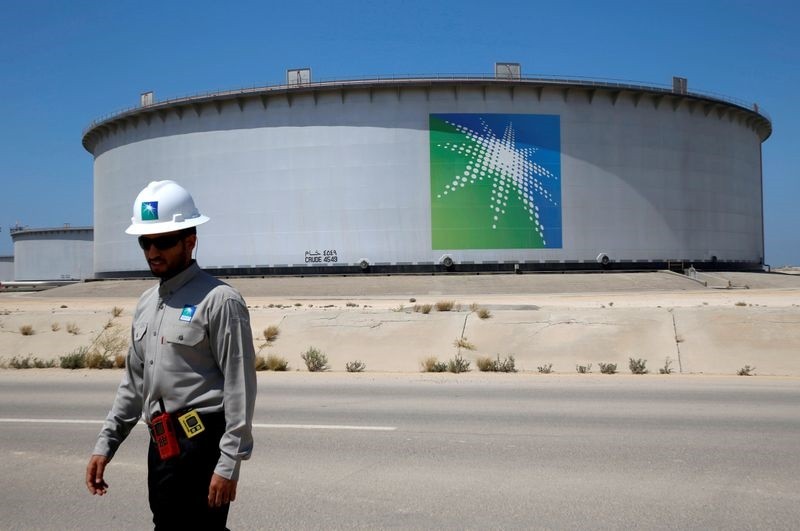Saudi Aramco stock is a challenge to Wall Street

The substantial dividends provided by Saudi Aramco can only partially compensate for the excessive valuation of its initial public offering.
Saudi Arabia’s state-owned oil business plans to conduct an initial public offering (IPO) this week, selling shares valued at a maximum of $12 billion. The Saudi government, which would retain over 80% ownership in Aramco after the sale, intends to utilize the funds generated to finance its Vision 2030 plans, which are in need of financial resources. Efforts to diversify the Saudi economy away from oil, such as the development of the futuristic desert city Neom, have not received the anticipated influx of foreign investment.
Investors in New York and London largely refrained from participating when Aramco became publicly traded in December 2019. The cost of $1.7 trillion was excessive, and they could obtain superior value elsewhere. Shell and BP had a dividend yield of almost 6%, while Aramco’s dividend yield was 3.85%.
The decision to cancel the dual listing on a major international exchange was made due to lackluster demand. Foreign investors acquired a mere 15% of the $29.4 billion first public offering (IPO) on Saudi Arabia’s domestic stock exchange. One-third of the offer was allocated to local retail investors, who were granted benefits such as one additional share for every ten shares they held for a minimum of 180 days.
Only a fraction of the latest offer will be given to local retail stockholders, specifically one-tenth. Aramco is aiming to attract overseas funds this time by increasing its payout. Following the implementation of a new distribution system based on performance last year, the corporation today boasts a dividend yield of 6.2%, surpassing that of Chevron or Exxon Mobil.
Nevertheless, Aramco remains considerably more costly than Western supermajors when considering other measures, such as price-earnings ratios and free cash flow returns. The current overvaluation of the company may hinder future returns, as it has done since the initial public offering. Aramco shares have yielded a 4% annual return, including dividends, since the conclusion of 2019. In comparison, Exxon has experienced an 18% rise, while TotalEnergies has seen a 14% increase.
“According to Bernstein analyst Neil Beveridge, the company entered the market with a high valuation and is currently in the process of justifying it through continued growth.”
Shareholders of Aramco did not benefit from the significant increases in share prices and generous dividends that were enjoyed by other prominent oil firms following Russia’s invasion of Ukraine in 2022. Aramco’s aggregate dividends remained unchanged at $75 billion throughout that year, although Exxon Mobil increased its distribution to shareholders twofold.
The Saudi government continued to reap significant benefits from the elevated oil prices in 2022. The royalties paid by Aramco to Riyadh have more than doubled, as these costs are directly linked to the oil price.
Due to the implementation of a new policy, Aramco’s payout is expected to exceed $120 billion this year. Currently, the interests of Aramco’s minority shareholders and the Saudi government appear to be in agreement, since both parties desire a greater distribution of cash to the owners.
However, Aramco’s dividend is not adequately supported by its free cash flow. Although the company currently has a positive cash balance on its financial statement, exceeding its generated cash flow through excessive payouts could eventually lead to a breach of its self-imposed debt-to-equity threshold of 15%. It may be challenging to sustain the greater payout if oil prices decline. Yesterday, OPEC+ (the Organization of the Petroleum Exporting Countries and its allies) reached an agreement to prolong their production reductions until 2025 in order to prevent a certain outcome.
Aramco, with around three million barrels of oil per day in spare capacity, serves as the Saudi government’s primary means of controlling energy prices to its desired levels. The International Monetary Fund (IMF) states that Riyadh requires oil prices to remain in the vicinity of $100 per barrel in order to achieve a balanced budget. The objective is difficult to achieve, and prolonging output cuts at Aramco results in its competitors outside of OPEC gaining market share.
This introduces an additional level of intricacy to Aramco, which is not a concern for investors in international oil corporations like Chevron or Shell. According to Jim Krane, a fellow for energy studies at Rice University, the corporation is really a subsidiary of the Saudi state and has a broader objective beyond simply making profits.
Aramco’s increased dividends may not generate the desired level of foreign investment for the country.










